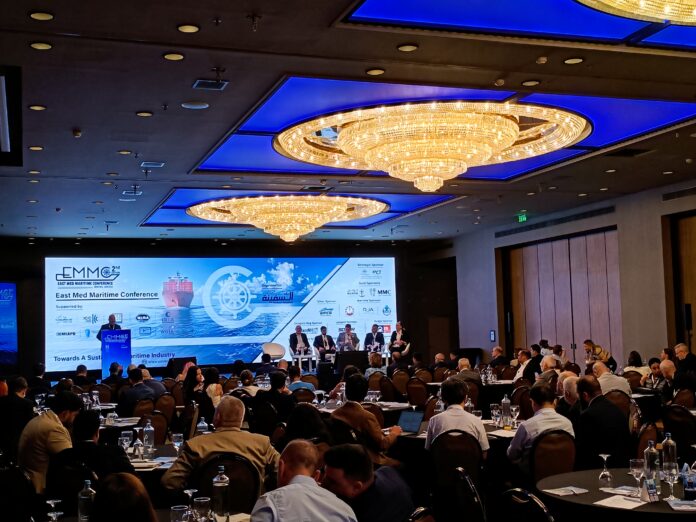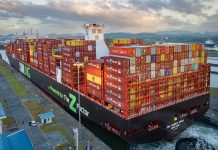
At the heart of the Mediterranean, the 2025 East Med Maritime Conference held in Athens sent a clear message: the region is no longer just a strategic waypoint but a thriving epicenter in the global maritime landscape.
The Container News team attended the event, which gathered stakeholders from across the shipping, logistics, port, and technological sectors to take stock of current disruptions, and identify opportunities driving transformation in the Eastern Mediterranean and beyond.
Here are some of the key conclusions:
Mediterranean Ports: Outpacing the North
Port activity in the Mediterranean is accelerating at a faster pace than in Northern Europe, with leading ports such as Piraeus, Valencia, Malta, and Port Said emerging as global trade anchors. The conference highlighted that Mediterranean ports now absorb nearly half of the Asia-Europe container trade an impressive 10.1 million TEUs out of 23 million, boosted by trends in nearshoring and a shifting production base closer to Europe.
Supply Chain Disruptions and Shifting Alliances
Shipowners face a turbulent horizon marked by supply chain fragmentation, the formation of new container shipping alliances, and a continued concentration of capacity among a few dominant players. Ro-ro transport is recovering from a deep shortage, and vessel size growth has stagnated.
However, vertical integration is reshaping the industry: carriers are increasingly investing in rail, inland terminals, and full supply chain logistics, from warehouses to last-mile delivery.
Digitalization and AI Integration
From ship to shore, the digital tide is rising. Logistics providers and transport companies are adapting to labor shortages, particularly truck drivers, through automation and digital tools.
AI is gradually being deployed on vessels for collision avoidance, fuel optimization, and cyber defense. DNV-backed practices and the new EU AI Act are paving the way for safe adoption, while route and speed optimization powered by AI are already delivering fuel savings.
Ports and Terminals: Going Green and Getting Smarter
Ports and terminal operators are navigating multiple challenges from adapting infrastructure to ever-larger vessels, to investing in electrification, automation, and sustainable operations.
Onshore power supply (OPS), automated cranes, and climate adaptation were hot topics. Yet, as shipowners enter terminal operations, terminals face declining margins and weaker bargaining power. Economies of scale and diversification of services like transshipment and ro-ro—are now key to survival.
Cybersecurity: A Growing Concern
Speakers warned of a rising tide of cyber incidents. Examples ranged from AIS spoofing that showed over 100 cargo ships appearing at Beirut airport, to software glitches disabling ferry propulsion.
The consequences are costly and potentially dangerous, with some tugboat operational costs climbing to $210 million annually. As the maritime world digitizes, the conference underscored the urgency of cybersecurity protocols and crew training.
Logistics Real Estate: Under Pressure
The land side of the supply chain is also evolving. Warehousing demand is surging across logistics hubs, spurred by companies seeking to expand inventory buffers. But labor shortages, rising construction costs, and the need for automation have pushed logistics real estate into a more competitive, capital-intensive terrain.
The Greening of Maritime Hubs
Finally, participants discussed what determines a port’s ability to transition toward greener operations.
Factors include cargo and passenger throughput, financial strength, connectivity to hinterland transportation networks, and the port’s role as a hub for industrial and energy activities.
Ports with diversified activity bases and robust administrative capacity were seen as best positioned to meet the dual challenge of decarbonization and rising trade volumes.
Conclusion: The Mediterranean Moment
As global trade lanes shift and the geopolitical landscape grows increasingly volatile, the East Med Maritime Conference emphasized that the Mediterranean is poised to redefine its role. With innovation, investment, and strategic coordination, the region is ready not only to meet disruption, but to lead through it.





